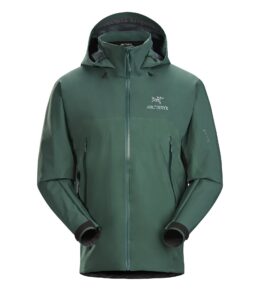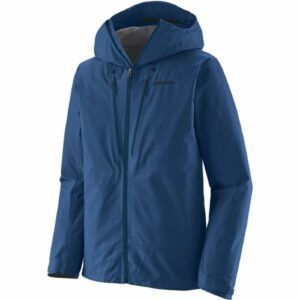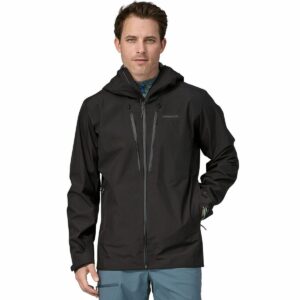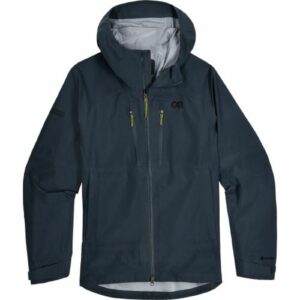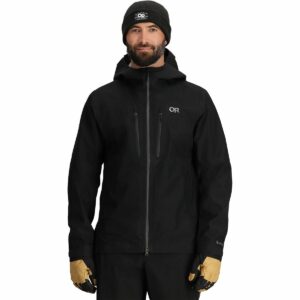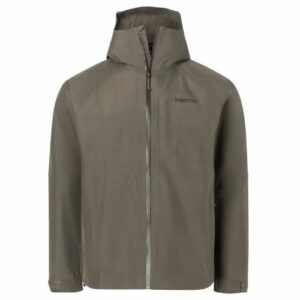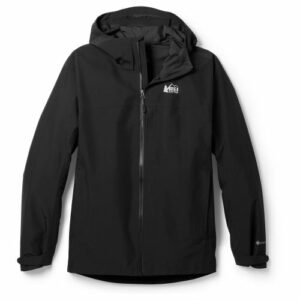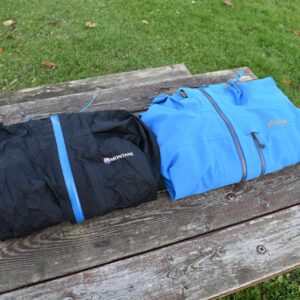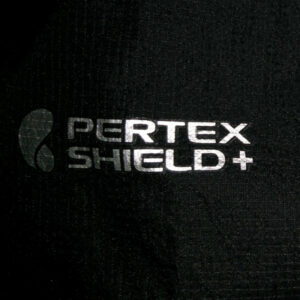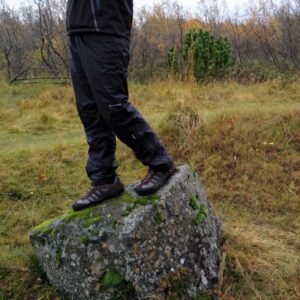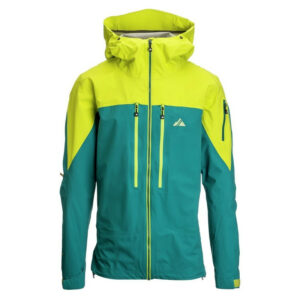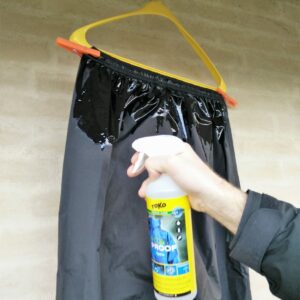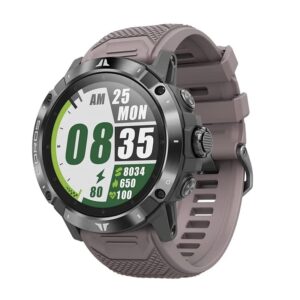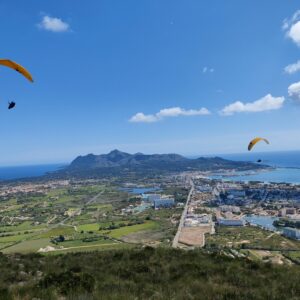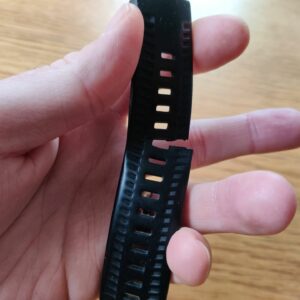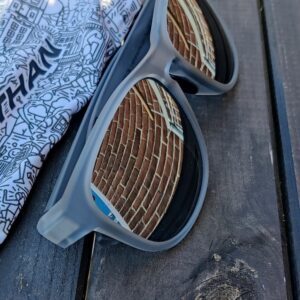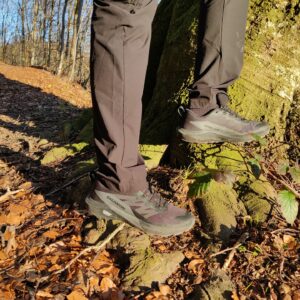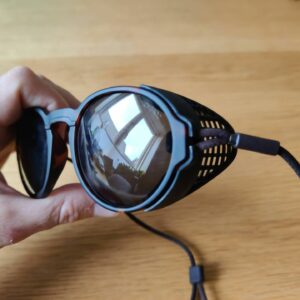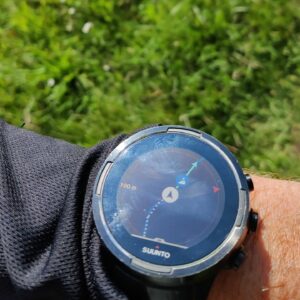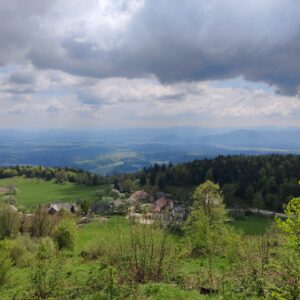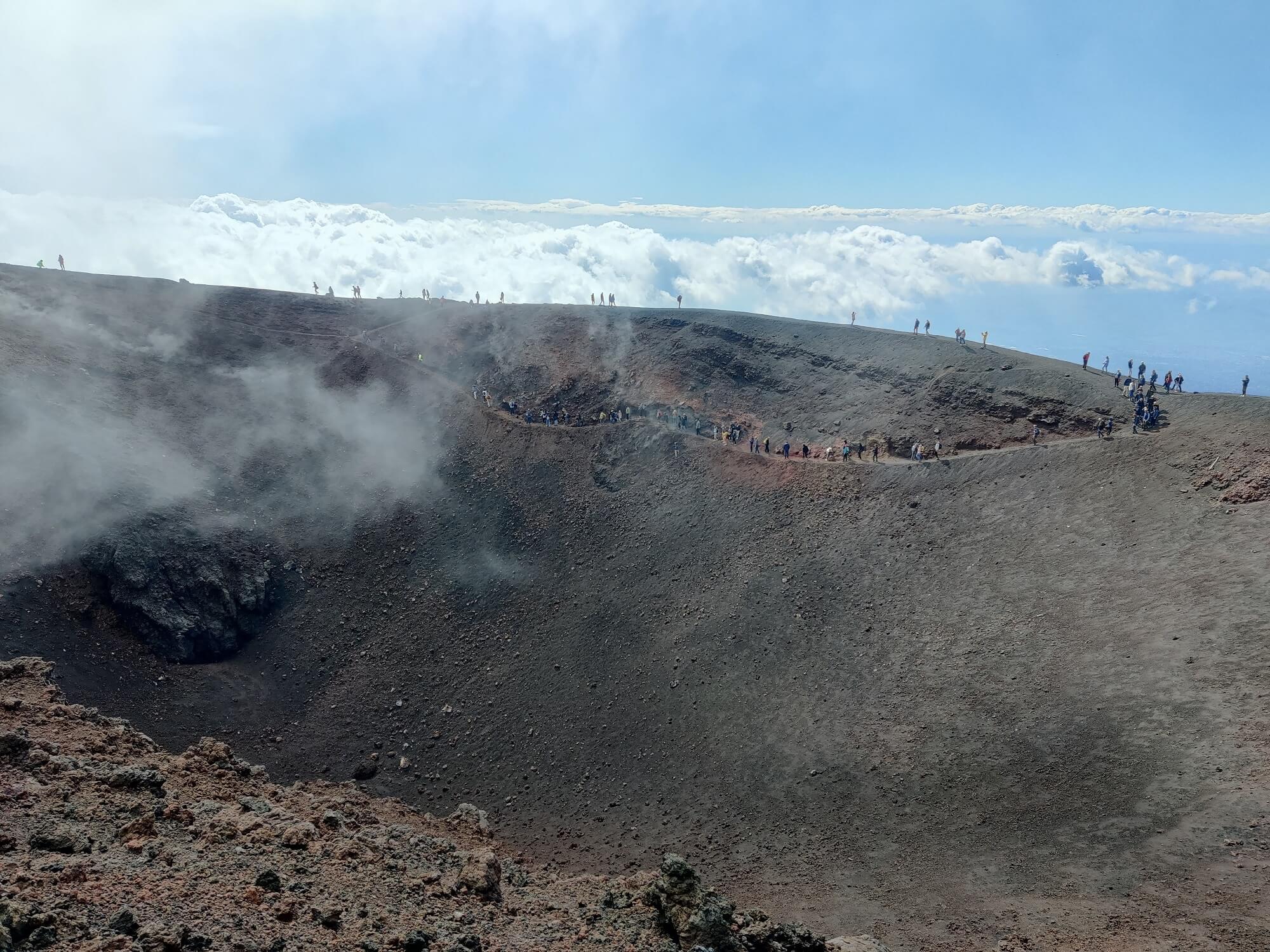For outdoor activities such as hiking, backpacking and mountaineering, high‑quality rainwear is essential. You want a shell that keeps rain, wind and snow out without making you sweat. Although numerous waterproof/breathable fabrics exist, Gore‑Tex is still the benchmark because it combines reliable weather protection with durability.
Here we selected the best five Gore-Tex rain jackets. We only listed high-quality rain jackets which in addition to the qualities of Gore-Tex also provide good durability and functionality (freedom of movement, pockets, hood etc.). Note that not all Gore-Tex jackets use the same material as the Gore-Tex fabric is available in several different versions. The most popular versions for jackets are Gore-Tex, Gore-Tex Active, Gore-Tex Paclite and Gore-Tex Pro. In the following we’ll also explain the difference between these four types of Gore-Tex fabric. To see how Gore-Tex compares to other waterproof/breathable fabrics in terms of breathability and water resistance, see the chart in our article Rainwear: Hydrostatic Head and Breathability (MVTR).
Updated Content
We regularly update our reviews and selections to always recommend you the best products on the market.
Expert Selections
We only list top-tier products. Read how our selections of best hiking products differ from others here.
Links
We use affiliate links and may receive a small commission on purchases at no extra cost to you.
1. Our Gore-Tex Jacket Picks
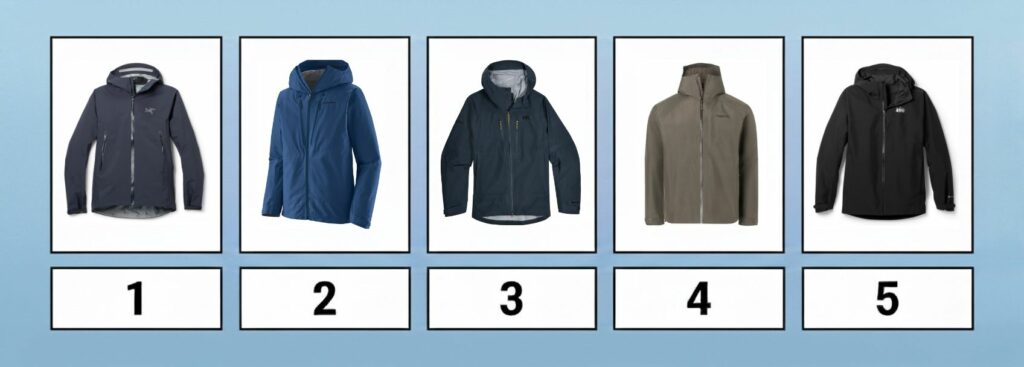
Best Gore-Tex Jackets
- Arcteryx Beta AR
- Patagonia Triolet
- Outdoor Research Headwall Gore‑Tex 3L
- Marmot Waypoint GORE TEX Rain Jacket
- REI Co-op Teris Gore‑Tex Rain Jacket
2. Comparison of Gore-Tex Jackets for Hiking
| Feature/Product | Arcteryx Beta AR | Patagonia Triolet | Outdoor Research Headwall | Marmot Waypoint | REI Teris |
|---|---|---|---|---|---|
| Weight | 16 oz. | 18 oz. | 17.7 oz. | 16.4 oz. | 24 oz. |
| Weight (Metric) | 455 g | 587 g | 363 g | 463 g | 326 g |
| Material | Gore-Tex Pro | Gore-Tex ePE | Gore-Tex ePE | 2-Layer Gore-Tex | 2-Layer Gore-Tex |
| Pockets | 3 | 5 | 4 | 3 | 3 |
| Helmet-Compatible Hood | Yes | Yes | Yes | No | No |
3. The Selection
Arcteryx Beta AR
Suitable for:
- Hiking
- Trekking
- Mountaineering
- Backpacking
- Alpinism
- ski touring
Arc’teryx’s Beta AR is one of the most respected hardshell jackets on the market. The latest version uses the rugged 3‑layer Gore‑Tex Pro membrane, with lighter 40‑denier fabric across most of the jacket and tougher 80‑denier panels on the hood and shoulders. This zoned construction balances weight and durability. The jacket in size M weighs around 15.6 ounces. Weather protection is outstanding – the superb membrane blocks wind, rain and snow, and the fully taped seams and waterproof zippers prevent water ingress. Arc’teryx pays close attention to details and that’s why the jacket has micro-seams for reduced bulk, RECCO reflectors and a helmet compatible hood with laminated brim. It also has internal collar for extra warmth, pit zips for better ventilation, two hand pockets and an internal chest pocket. The Beta AR’s fit is tailored but roomy enough for layering; however, some testers find it slightly short for skiing.
Women's Version: Available - Arcteryx Women's Beta AR
Note: Women's version might slightly differ from the men's version.
Pros:
- Outstanding weather protection
- Durable fabrics
- Quality construction
- Pit zips for better ventilation
Cons:
- Expensive
- A bit heavier and bulkier than lightweight shells
Video

Patagonia Triolet
Suitable for:
- Hiking
- Trekking
- Mountaineering
- Backpacking
- Ski touring
Patagonia’s Triolet is built around the brand’s more sustainable Gore‑Tex ePE membrane. The jacket uses a thick 75‑denier face fabric and a 3‑layer ePE construction that provides great protection against the weather and abrasion. The latest version weighs around 1 lb 2 oz and includes five pockets – two hand pockets, two chest pockets and an internal pocket. The extended cut, helmet‑compatible hood, tall collar and glove‑friendly cuffs make the Triolet ideal for winter and alpine use. Patagonia updated the membrane to Gore‑Tex ePE, which is lighter and uses fewer chemicals. However, the PFC‑free DWR coating washes off faster and may require more frequent maintenance. See how to re-waterproof your rain jacket here. Some users find the jacket’s too baggy and the fabric too stiff. Nevertheless, the rugged build and reasonable price make it an attractive option skiing and mountaineering. Compared with the Beta AR, the Triolet offers more pockets and costs less but it also weighs a bit more.
Women's Version: Available - Patagonia Women's Triolet Jacket
Note: Women's version might slightly differ from the men's version.
Pros:
- Very durable fabric
- Five pockets
- Sustainable ePE membrane; PFC‑free DWR
Cons:
- Heavy compared to other shells
- Stiff fabric
- Breathability could be better
- DWR washes off faster
Video

Outdoor Research Headwall Gore‑Tex Jacket
Suitable for:
- Hiking
- Trekking
- Backpacking
- Mountaineering
- Ski Touring
- Alpine Climbing
Seattle‑based Outdoor Research designed the Headwall jacket for wet and rugged conditions. This hardshell uses a 3‑layer Gore‑Tex ePE membrane and a 75‑denier shell, providing durability and waterproofness. The standout feature is Outdoor Research’s TorsoFlo ventilation system which are basically long underarm zips that run from the bicep to the hem on both sides. These vents can be opened from the top or bottom, allowing you to cool down while wearing a harness or backpack. The boxier fit leaves space for layers, and the helmet‑compatible hood easily fits climbing and ski helmets. The jacket weighs around 1 lb 1.7 oz (men’s) and includes four pockets (two hand and two chest pockets). Smooth YKK zippers, glove‑friendly toggles and long Velcro cuffs add to the functionality. This jacket faces hard competition from the Patagonia Triolet, which is made of similar materials but costs less. Nevertheless, the hem‑to‑pit vents are usable and that’s a feature the Triolet jacket doesn’t offer.
Women's Version: Available - OR Women's Headwall Jacket
Note: Women's version might slightly differ from the men's version.
Pros:
- Long TorsoFlo vents
- Durable 75 D shell with 3‑layer Gore‑Tex ePE membrane
- Quality zippers and toggles
Cons:
- Heavy
- Doesn’t pack small
Marmot Waypoint Gore-Tex Jacket
Suitable for:
- Hiking
- Backpacking
- Commuting
- Travel
Marmot’s Waypoint is a versatile everyday rain shell that provides great performance. Unlike the other jackets in this article, it uses a 2‑layer Gore‑Tex laminate with a DriClime mositure-wicking liner for added comfort. Underarm pit zips help regulate temperature and and raglan sleeves maintain mobility and comfort when wearing a backpack. The jacket is fully seam‑taped and weighs around 1 lb (466 g). It packs relatively small. Two zippered hand pockets and a hidden chest pocket provide secure storage. A fixed hood with peripheral cord adjustment, Velcro cuffs and a drawcord hem help keeping you dry in bad weather. Because this is a 2‑layer jacket, it does not offer the same durability or breathability as other jackets in this review for serious alpine pursuits. However, it’s less expensive and lighter than the Gore‑Tex Pro or ePE options above. The Waypoint is a good choice for hikers who want reliable waterproofing for a good price.
Women's Version: Available - Marmot Women's Waypoint Jacket
Note: Women's version might slightly differ from the men's version.
Pros:
- Lightweight, packable 2‑layer Gore‑Tex fabric
- DriClime liner and pit zips improve comfort and ventilation
- Affordable compared to 3‑layer shells
- Useful pocket layout with hidden chest pocket
Cons:
- Less durable and less breathable than 3‑layer shells
- Hood is fixed and not helmet‑compatible
REI Teris Gore‑Tex Jacket
Suitable for:
- Hiking
- Trekking
- Backpacking
- Mountaineering
- Commuting
REI’s Teris GTX Rain Jacket is a 2‑layer shell designed for harsh weather. It uses a Gore‑Tex waterproof/breathable membrane paired with a solid polyester taffeta liner for comfort. The jacket is fully seam‑taped and features pit zips that run down the sides for better ventilation. The jacket also has a helmet‑compatible hood with dual front bungees and a rear adjustment, and a stiff brim which protects your face in heavy rain. A generous cut, slightly longer sleeves and a droptail hem provide a lot of room for layering and extra coverage. Storage includes a zippered chest pocket large enough for a smartphone and two lined handwarmer pockets. Velcro wrist cuffs and dual hem drawcords allow for a secure fit, and the hand pockets sit high enough to work with a backpack hipbelt. The Teris GTX is despite 2-layer Gore-Text fabric quite heavy and doesn’t pack small, mostly because of the inner liner.
Women's Version: Available - REI Women's Teris GTX
Note: Women's version might slightly differ from the men's version.
Pros:
- Pit zips
- Comfortable liner
- Good pocket configuration
Cons:
- Heavy and not very packable
4. Gore-Tex Jacket Buying Advice – What is important?
Type of Gore-Tex Fabric:
Gore-Tex fabric is available in four different versions – Gore-Tex, Gore-Tex Active, Gore-Tex Paclite and Gore-Tex Pro.
Gore-Tex (standard):
The Gore-Tex fabric is the most versatile and can be used for almost everything, from around-the-town wear to hiking. It is less expensive than the Gore-Tex Pro but on the other hand it is also less breathable and heavier.
Gore-Tex Active:
The Gore-Tex Active fabric is very light and provides superb breathability. However, it doesn’t match the other types of Gore-Tex fabric when it comes to protection against the elements. The Gore-Tex Active fabric is designed for highly aerobic activities such as speed hiking, trail running, cycling and cross-country skiing.
Gore-Tex Paclite:
Gore-Tex Paclite is designed to be very packable and lightweight. A garment made of Gore-Tex Paclite material is thus a great option for a back-up hardshell – something you throw in the backpack and put on in case of rain or strong wind. Gore-Tex Paclite is not as breathable as Gore-Tex Active and feels stiffer. Nevertheless, it is also less pricy.
Gore-Tex Pro:
The Gore-Tex Pro fabric is the most advanced fabric from this iconic brand. It provides great breathability, durability and protection against the elements. However, jackets made of Gore-Tex Pro material tend to be very expensive. These jackets are primarily intended for alpinism, mountaineering and expeditions but can also be worn for other activities.
Gore-Tex ePE:
Gore’s newer membrane replaces the longstanding ePTFE laminate and uses fewer perfluorinated chemicals. It provides waterproofness and breathability similar to Gore‑Tex Pro but is lighter and more sustainable.
Hood:
Gore-Tex rain jackets typically have an adjustable hood for good fit. If you often do technical activities which require a climbing helmet, go for a jacket that has a helmet-compatible hood (in the comparison table above you can see which jackets offer this feature). All jackets in this review are equipped with adjustable hoods.
Pockets:
Pockets are handy for storing accessories. Jackets like the Triolet, Headwall and Teris provide multiple pockets, while some minimalist shells omit hand pockets to save weight. Pocket placement matters: high hand pockets don’t interfere with a harness or backpack hip belt, and chest pockets keep essentials accessible.
Ventilation
Most high‑end shells include pit zips or other vents. Ventilation helps regulate temperature during high‑output activities and is especially important for heavier jackets like the Triolet and Teris. OR’s Headwall goes a step further with TorsoFlo vents that run from the hem to the bicep.
Taped Seams:
High-end jackets have taped seams which ensure that water doesn’t leak through them. All jackets in this review of the best Gore-Tex rain jackets naturally have taped seams. To learn more about taped seams, read the Trespass article What are Taped Seams.
Zippers:
High-end rain jackets have waterproof zippers (such as the YKK Aqua Guard zipper) which repel the water.
5. Questions and Answers
Are Gore-Tex jackets warm?
Gore-Tex jackets do not provide insulation/warmth. A Gore-Tex jacket is a shell garment which in simple terms means that it provides protection against wind, rain and snow. It is typically worn over the insulation layer (mid-layer) which is the layer providing warmth.
Are Gore-Tex jackets waterproof?
No so-called waterproof/breathable fabric is completely waterproof because there is always a tradeoff between waterproofness and breathability. Garments need to be breathable because otherwise you would soak in your own sweat due to your perspiration getting trapped.
Can you re-waterproof Gore-Tex?
Yes, you can apply DWR (Durable Water Repellant) to Gore-Tex garments. DWR ensures that the fabric repels the water rather than absorbs it.
Can you wash Gore-Tex jacket?
Most Gore-Tex jackets are machine washable. After washing, you should apply DWR because it will get washed off.
